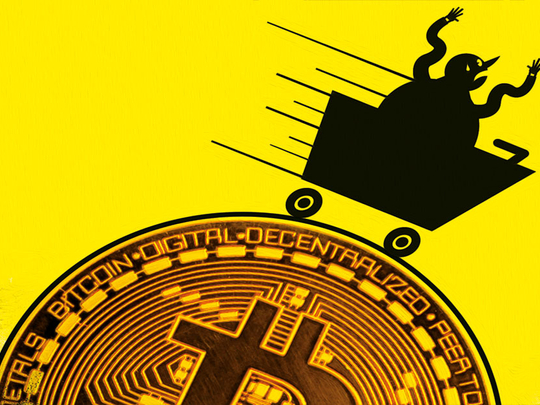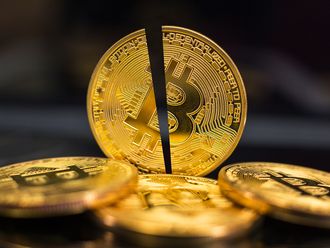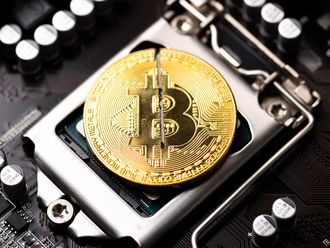
What drives volatility? In equities these days, it turns out, not much.
With just 6.8 per cent realised volatility in the S&P 500 Index, 2017 marked the least volatile year since 1964. Low correlation among stocks, muted inflation variability and market-friendly central bank policies all played a role.
But that hasn’t stopped investors from asking, “Who ate the vol?”
We point them in the direction of cryptocurrencies. The volatility of bitcoin was almost 13 times that of the S&P 500 in 2017, a year in which both enjoyed strong price performance but with very different risk profiles.
Driving the stability in stocks is an especially strong consensus among equity strategists about the year ahead. This measure is well-correlated to the Cboe Volatility Index, or VIX, indicating that the price of options on the S&P 500 moves higher during turning points in the earnings cycle — as we saw in 2008 and 2009 — and lower in periods of stable and positive earnings growth like the present.
While many forces drive daily fluctuations in equities, ultimately, it is changes in expectations of corporate earnings that have the most impact. For bitcoin and other cryptocurrencies, there is no such earnings yardstick, only the waxing and waning of enthusiasm for a potentially revolutionary asset class for which the sky may be the limit.
The return and volatility characteristics of bitcoin stand in contrast with those of the S&P 500. The annualised volatility of bitcoin in 2017 was almost double that of the year prior, even as its price rose 15-fold.
Bull-market years in equities, such as 2013, when the S&P 500 soared 29.6 per cent, or last year, when it gained 19.4 per cent, invariably come about when volatility is low, not high. The S&P 500 had just 11.2 per cent volatility in 2013, much lower than the 41 per cent seen in 2008 when the benchmark plunged 38.5 per cent. The difference between 2008 and 2013 was a marked shift in both reported and anticipated corporate profits.
Earnings drive the stock market.
What makes cryptocurrencies different? There are no earnings and there is no consensus valuation framework. Instead, there is rampant enthusiasm and the powerful fear of missing out. Captivating tales of substantial wealth generated over a very short time inspire fresh capital into the market.
The rush to buy pushes prices higher. The result is a frenetic and positive spiral of price and volatility. In this context, bitcoin has become the poster child for self-reinforcing price momentum and speculation.
We have seen before what results when investors justify almost any price for an asset. Untethered by the constraint of valuation, price action drives demand, which further drives the price. This “sky is the limit” psychology has been present in other assets the last two decades, including the dot-com era of 1998 and 1999, crude oil in 2008, and gold in 2011.
In each of these episodes, the spot price and option implied volatility moved sharply higher during a period when the fear of missing out aligned with a strong “this time is different” narrative, producing a powerful rally. In the dot-com boom, the Nasdaq 100 Index rose by 85 per cent in 1998 and 102 per cent in 1999.
The volatility of the technology index was 33 per cent in that span, a marked increase from the prior two-year period. In 2008, crude oil approached $150 per barrel by midyear, almost double the level from a year earlier.
The implied volatility of front month options — or those closest to expiration — almost doubled from a year earlier. During the US debt ceiling crisis in 2011, investor fear caused gold to spiral higher, pushing the SPDR Gold Trust ETF up 26 per cent from July to September while implied volatility for front month contracts spiked from 15 per cent to 35 per cent.
These three historical analogues bear similarity to the current risk dynamic in bitcoin and other cryptocurrencies. A seductive, path-breaking story and the resulting price action become compelling enough as to demand action.
The positive relationship between price and volatility make it nearly impossible for an investor to make a bearish bet as the risk of being wrong is simply too large. Even for tech stocks in the late 1990s, earnings became irrelevant to the valuation story. When fundamentals are overwhelmed by the allure of the story and the power of price momentum, volatility to both the upside and downside is almost sure to result.











